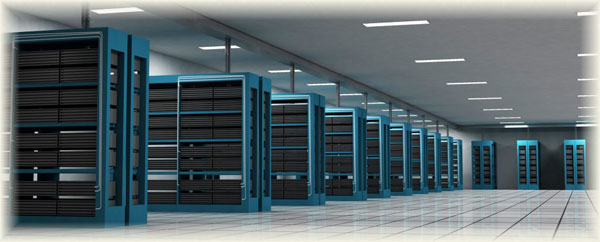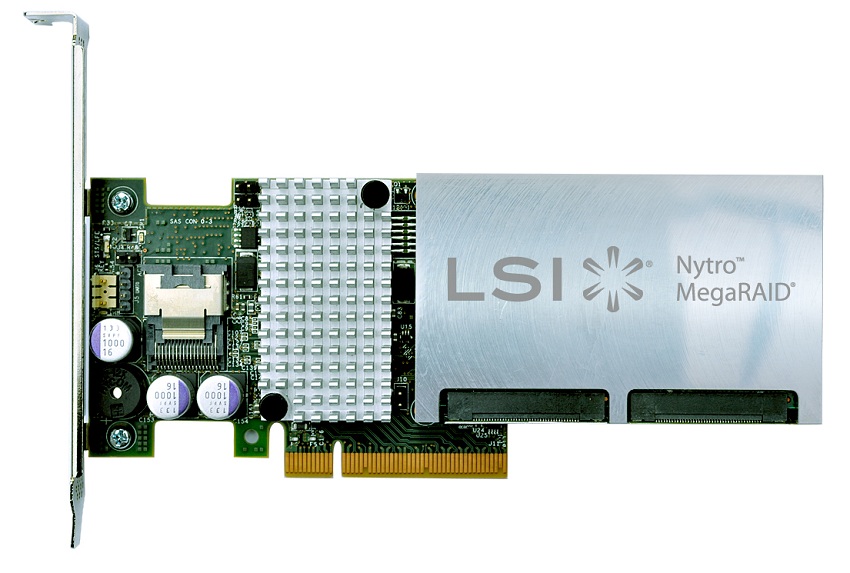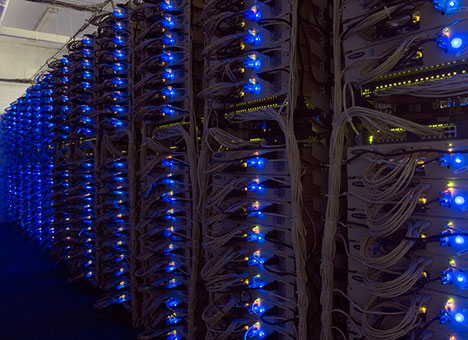Is it possible to get away from the HDD in hosting servers?

The fact that hosting is very expensive in terms of disk space is perhaps no surprise to anyone. As well as the fact that the solutions used to store data in this case should be as fast as possible. Therefore, ideally, it would be good to use only SSDs for such storages, but in very many cases this is an unattainable ideal, primarily because of the high (albeit decreasing) price. The price issue is especially tough for large data centers .
Hybrid solutions combining traditional HDDs and flash drives for caching can help in this situation.
This short note is devoted to two functions in the new firmware for NytroMegaRAID controllers. We already wrote about LSI Nytro and its practical application.but I’ll briefly remind you what NytroMegaRAID is.
The MegaRAID platform is quite well known - LSI RAID controllers have been sold under this name for many years. About three years ago, we announced the industry's first 6Gb / s controllers. The power of the processors used in the controllers of this series reached such indicators that it was decided to direct the free processor resources to support advanced functions called Advanced Software Options.
Advanced Software Options includes four storage applications: CaheCade, FastPath, Recovery, and SafeStore. The most interesting and popular among users was the CacheCade package, which allows you to create an additional cache on high-speed SSDs. This application survived two releases, the first of which (CaheCade 1.1) allowed to use the SSD pool only as a read cache, and the second (CacheCade 2.0) allowed to use the SSD cache and write, along with the ability to configure RAID-10 to cache group.
The main problem when using CacheCade was the immature SSD market. Perhaps some companies still use the excellent product from Intel X25E - SLCSSD disc with remarkable characteristics, both for writing and reading. A complete surprise for many was his disappearance from the market and the replacement with cheaper, but slower (especially for recording) devices of the 3rd and 5th series.
We learned a lesson from this, and released a product that already contains SSDs on board, the parameters of which allow them to be used for caching. This product is called NytroMegaRAID 1.0, and it is its firmware version 1.5 that contains two innovations in question.

So, CacheCade 2.0 offered two kinds of configurations for the cache group. RAID0 and RAID10. In the first option, if one of the SSDs fails, we lose the entire cache group. This means in the case of read caching, a return to the original level of performance, and in the case of a write cache, data loss. Therefore, to enable write cache, the ability to configure a cache group in RAID-10 was introduced. Losing one of the drives no longer leads to data loss when caching records.
An unpleasant fact in this case is that we use only 50% of the valuable SSD capacity. Imagine that you can split the cache into write and read. In this case, the need for duplication of information for fault tolerance is only for the write cache. The read cache can only be located on one of the devices, since its loss does not lead to data loss. We are going to implement this function in NMR 1.5 under the name Elastic Cache. If the ratio of read and write caches is 50:50, the “effective volume” of the cache will be 75% of the total capacity of the cache group. Typically, for databases (applications for which SSD caching is most efficient), the read-to-write ratio is 70:30 (85% of effective capacity). For Exchange and other mail systems, the number of write operations is even less.
The second innovation was the ability to boot from a standard SSD controller NytroMegaRAID. To do this, it will be possible to isolate the boot area in which users can place the boot image of the OS or hypervisor. That is, now it will be possible to start completely without disks. Of course, there are cheaper solutions for diskless downloads, and our solution is not really for that.
Where can this function be applied? Many hosting companies, as well as companies implementing VDI (in both cases, caching is particularly effective), are forced to spend precious (especially in the case of virtualization) HDD slots for boot disks, instead of placing user data there. In such configurations, booting from the SSD will help you solve configuration difficulties.

Answering the title question of the article, I will say the following. Of course, hard drives are still needed to store large amounts of data, but we learned how to use them in conjunction with SSDs, creating hybrid arrays that combine the advantages of both technologies, HDD (price per GB) and SSD (speed of arbitrary I / O) . Many are already used to the fact that modern laptops / ultrabooks load in seconds, taking advantage of SSDs, now it's the turn of servers. Recently, we conducted a visual demonstration of Nytro solutions, showing its capabilities on a test bench .
